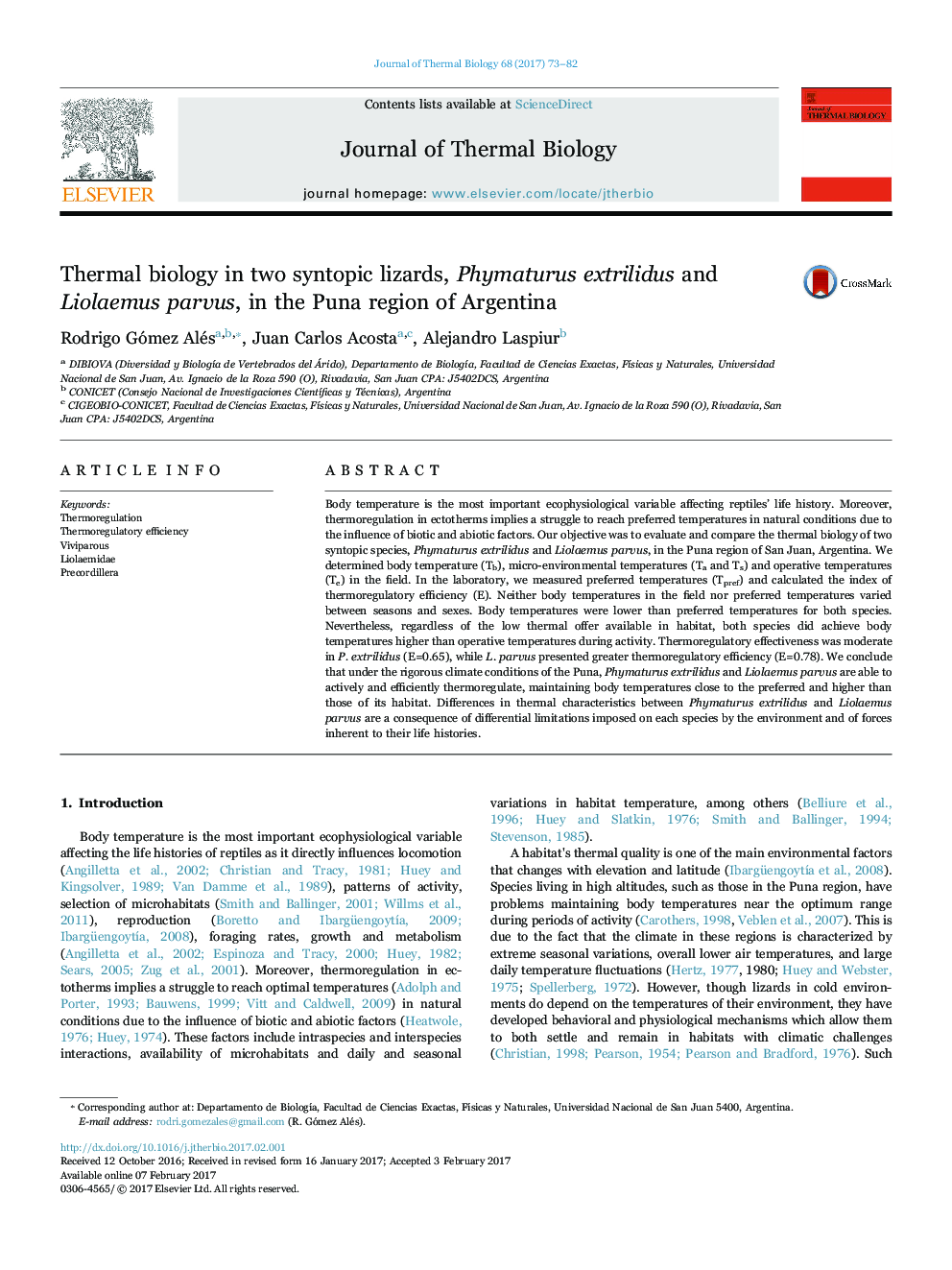| کد مقاله | کد نشریه | سال انتشار | مقاله انگلیسی | نسخه تمام متن |
|---|---|---|---|---|
| 5593457 | 1405083 | 2017 | 10 صفحه PDF | دانلود رایگان |

- We study thermoregulation of two species syntopic of the Puna region, Phymaturus extrilidus and Liolaemus parvus.
- The field body temperature of P. extrilidus is 32.32 °C and L. parvus 33.74 °C.
- L. parvus selected higher temperatures than P. extrilidus.
- There is no significant variation in thermal characteristics between the seasons and sex in P. extrilidus and L. parvus.
- Thermoregulation effectiveness is better in L. parvus than in P. extrilidus.
Body temperature is the most important ecophysiological variable affecting reptiles' life history. Moreover, thermoregulation in ectotherms implies a struggle to reach preferred temperatures in natural conditions due to the influence of biotic and abiotic factors. Our objective was to evaluate and compare the thermal biology of two syntopic species, Phymaturus extrilidus and Liolaemus parvus, in the Puna region of San Juan, Argentina. We determined body temperature (Tb), micro-environmental temperatures (Ta and Ts) and operative temperatures (Te) in the field. In the laboratory, we measured preferred temperatures (Tpref) and calculated the index of thermoregulatory efficiency (E). Neither body temperatures in the field nor preferred temperatures varied between seasons and sexes. Body temperatures were lower than preferred temperatures for both species. Nevertheless, regardless of the low thermal offer available in habitat, both species did achieve body temperatures higher than operative temperatures during activity. Thermoregulatory effectiveness was moderate in P. extrilidus (E=0.65), while L. parvus presented greater thermoregulatory efficiency (E=0.78). We conclude that under the rigorous climate conditions of the Puna, Phymaturus extrilidus and Liolaemus parvus are able to actively and efficiently thermoregulate, maintaining body temperatures close to the preferred and higher than those of its habitat. Differences in thermal characteristics between Phymaturus extrilidus and Liolaemus parvus are a consequence of differential limitations imposed on each species by the environment and of forces inherent to their life histories.
Journal: Journal of Thermal Biology - Volume 68, Part A, August 2017, Pages 73-82